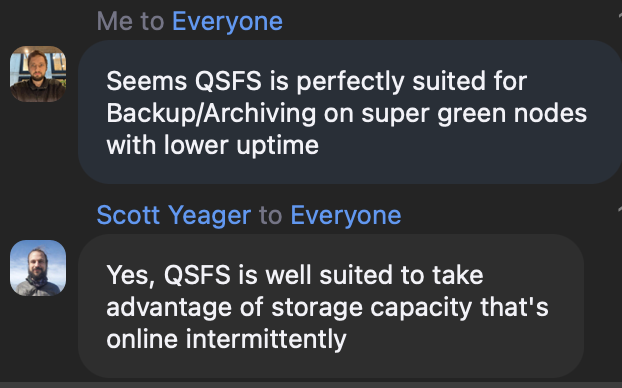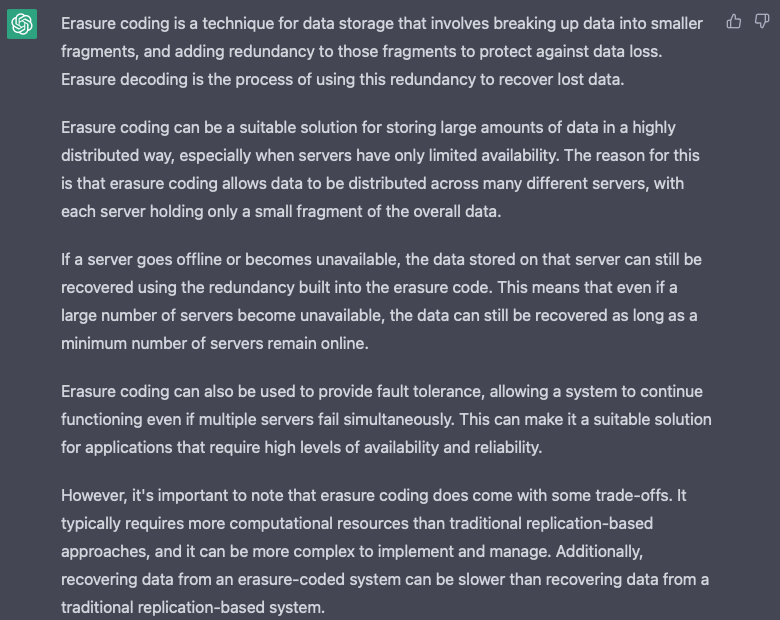Hey guys.
Sounds like some progress is being made here!
So as a synthesis,
-
The idea of building a “Solution Provider + Commercial Grid Service + Green Farming Alliance” looks like it would work, for workloads such as QSFS and https load balancers or serving static files. (big thanks to @scott for confirming this)
-
There seem to be a consensus on the suggestion of “lowering the uptime requirements for farmers using physically green energy.” Instead of aiming for “booster rewards” for green farming.
One thing, @jakubprogramming. I am not sure about this calculation:
P(all offline) = P(server 1 offline) * P(server 2 offline) * P(server 3 offline)
= 0.1 * 0.1 * 0.1
= 0.001
This doesn’t take into account the distribution of the farms. For a very simple counter-example, if the 3 farms have their downtime at the same time, it will still be a 10% downtime.
Without going into details, the equation you wrote is more in line with Bernoulli trials.
To be sure we get the highest uptime possible, one would need to select farms that have different moments of downtime. A simple distribution could be having solar farms distributed across the globe. This could lead to higher uptime than, say, solar farms all in France.
One question about the type of green farming: Do we consider it to be green farming if one’s farm is using 100% hydroelectricity?
I would say yes. I’d be curious to see what others think.
That being said, hydroelectricity farms can easily have 100% uptime (mine does  ).
).
Still farmers in my situation wouldn’t get anything from the program if we don’t have boosters, but only lower uptime requirement for green farming, since uptime isn’t a problem with hydroelectricity (generally speaking, of course). Not that it’s a problem. I am just observing some facts.
Next steps could be to redact a proposal for lowering downtime for green farming.
And to explore the commercial grid service as proposed above.





 ).
).
